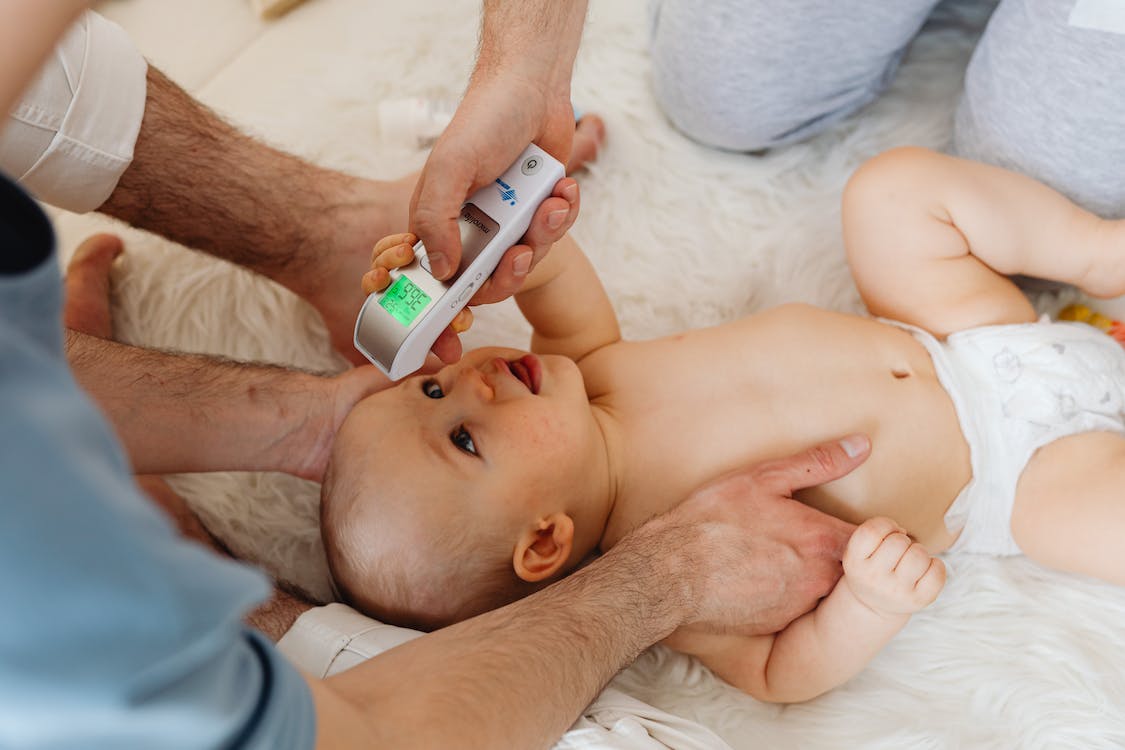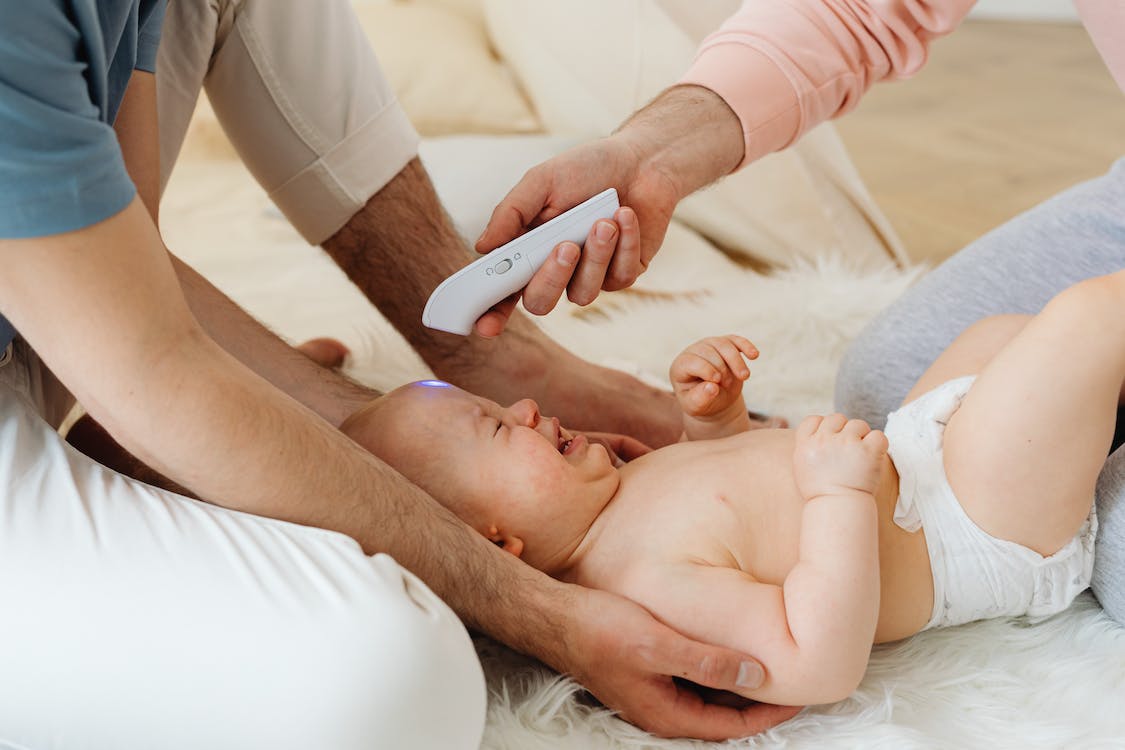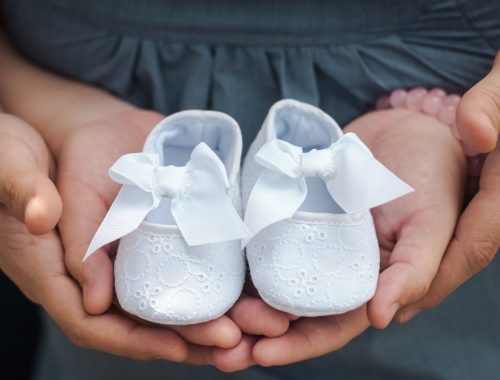
How to Take a Baby’s Temperature?
How to Take a Baby’s Temperature?
Summary:
Step 1: Understand why taking a baby’s temperature is necessary.
Step 2: Take your baby’s temperature with a graduated or digital thermometer.
Step 3: Take your baby’s temperature with a forehead thermometer.
Step 4: Take your child’s temperature with an ear thermometer.
Your baby seems very tired, and their forehead feels warm. As they gradually develop their immune system, there are numerous infections they can contract. Various methods exist to monitor your child’s temperature, and navigating through the abundance of thermometers can be challenging. Here’s how to take a baby’s temperature.
Step 1: Understand why it’s necessary to take a baby’s temperature
Fever is the body’s defense mechanism to counter the growth of bacteria and viruses. When a baby develops an infection, their temperature can rise. Once it reaches 38 °C, fever becomes a symptom revealing an illness or teething. You can feel the warmth if you place your hand on your child’s forehead. However, only a thermometer can confirm a fever and accurately measure your baby’s temperature.
Take your baby’s temperature every 6 hours. Generally, a fever that does not exceed 38.5 °C typically subsides within 2 to 3 days without complications. To monitor its progression, opting for a reliable temperature measurement is necessary.
When choosing a thermometer for babies in the United States, selecting one that complies with the ASTM E1112-00(2018) standard or other relevant standards specified by trusted organizations or regulatory bodies is recommended.
Take the temperature while your child is at rest, away from exertion, baths, and meals (wait at least 30 minutes).
Take the temperature while your child is in a non-overheated room.
Preferably clean the thermometer before and after taking the temperature with soapy water.
Important: If your baby’s temperature exceeds 38.5 °C, if they exhibit marked fatigue or refuse to eat, if the fever persists beyond 48 hours, or if your child is under 3 months old, consult your doctor.
Step 2: Take your baby’s temperature with a graduated or digital thermometer
Mercury thermometers are now prohibited, but other instruments have replaced them. In similar presentations, you can find gallium thermometers with a graduated scale or electronic thermometers with a digital display (a small liquid crystal screen).
Rectal Method
Rectal temperature measurement is ideal for accuracy, especially for children under two years old (who may move and distort other measurement methods). The displayed temperature is perfectly reliable and should be preferred.
- Lubricate the metal tip with petroleum jelly after cleaning the thermometer with soapy water.
- Lay your child on their back with their legs bent.
- Insert the thermometer’s tip into the rectum through the anus about 2 cm.
- Wait 3 minutes while holding the thermometer in the rectum (some electronic thermometers emit an audible signal).
- Remove the thermometer and read the result immediately.
- Clean the thermometer with soapy water.
Oral Method
Taking the temperature orally may seem natural and easy. However, in a baby, this method does not provide reliable measurements. A baby cannot concentrate properly to hold the thermometer; he may breathe through his mouth and distort the result or even break a glass thermometer by biting it. Therefore, do not use this method for your baby.
Axillary Method
Axillary temperature measurement, i.e., under the armpit, is possible for a baby. However, it serves more as an indication because it is an imprecise measurement since the ambient temperature influences the result.
After cleaning the thermometer, place the tip in the center of your child’s armpit (no clothing should obstruct the measurement).
Press their arm against their chest so that the tip is completely covered.
Stay in this position for 3 minutes to obtain a relevant result (some electronic thermometers emit an audible signal).
Read the temperature and then clean the thermometer with soapy water.
Good to know: Add 0.5 °C to the axillary temperature to obtain your child’s actual temperature.
Step 3: Take your baby’s temperature with a forehead thermometer

Contactless forehead thermometers avoid invasive measurements and are increasingly used for taking a baby’s temperature. Moreover, their speed makes them particularly appreciated by parents.
Use an infrared forehead thermometer
Infrared forehead thermometers allow you to take your baby’s temperature without even touching them. The result is displayed on a liquid crystal screen. Most models require scanning from the middle of the forehead to the child’s temple, but the recommendations may vary among manufacturers. To properly use this type of thermometer, read the instructions carefully.
Note that the accuracy of these thermometers is often lower than rectal measurements. Additionally, they may require recalibration through manual manipulation to display precise measurements (refer to the instructions or contact the manufacturer).
Good to know: These infrared thermometers also allow you to measure the temperature of your baby’s bath or bottle.
Evaluate the temperature with a forehead temperature indicator strip
Forehead temperature indicators are strips to be placed on the forehead. Depending on the temperature, squares change color to display 37, 38, or 39 °C within a few seconds.
These strips are very imprecise, and it is best not to use them. They are not thermometers, and their reliability is therefore highly questionable. Several factors can distort the results (sweating, room temperature, etc.). If you use this indicator type, you must confirm the result with a thermometer temperature measurement.
Step 4: Take your child’s temperature with an ear thermometer
Ear thermometers that use infrared technology are also quick and convenient. However, they have major reliability drawbacks:
The displayed values are incorrect if the infrared rays do not reach the eardrum, which is often the case with children under 2 years old.
They do not work if earwax blocks the ear canal.
They must be spotless for the infrared rays to reach the eardrum.
To use it correctly:
- Change the disposable earpiece.
- Hold the ear by the pinna and pull it up and backward to straighten the ear canal to align with the eardrum.
- Gently and completely insert the thermometer’s earpiece.
- Press the button (refer to the instructions).
- Read the displayed temperature after removing the thermometer from the ear.
Equipment needed to take a baby’s temperature:
Thermometer
Infrared ear thermometer
Electronic thermometer
Electronic forehead thermometer
Infrared forehead thermometer
You May Also Like

Which Shoes for Your Baby?
2022-10-28
Top 6 Tips To Ameliorate Your Relationship With Your Teens
2022-06-08

